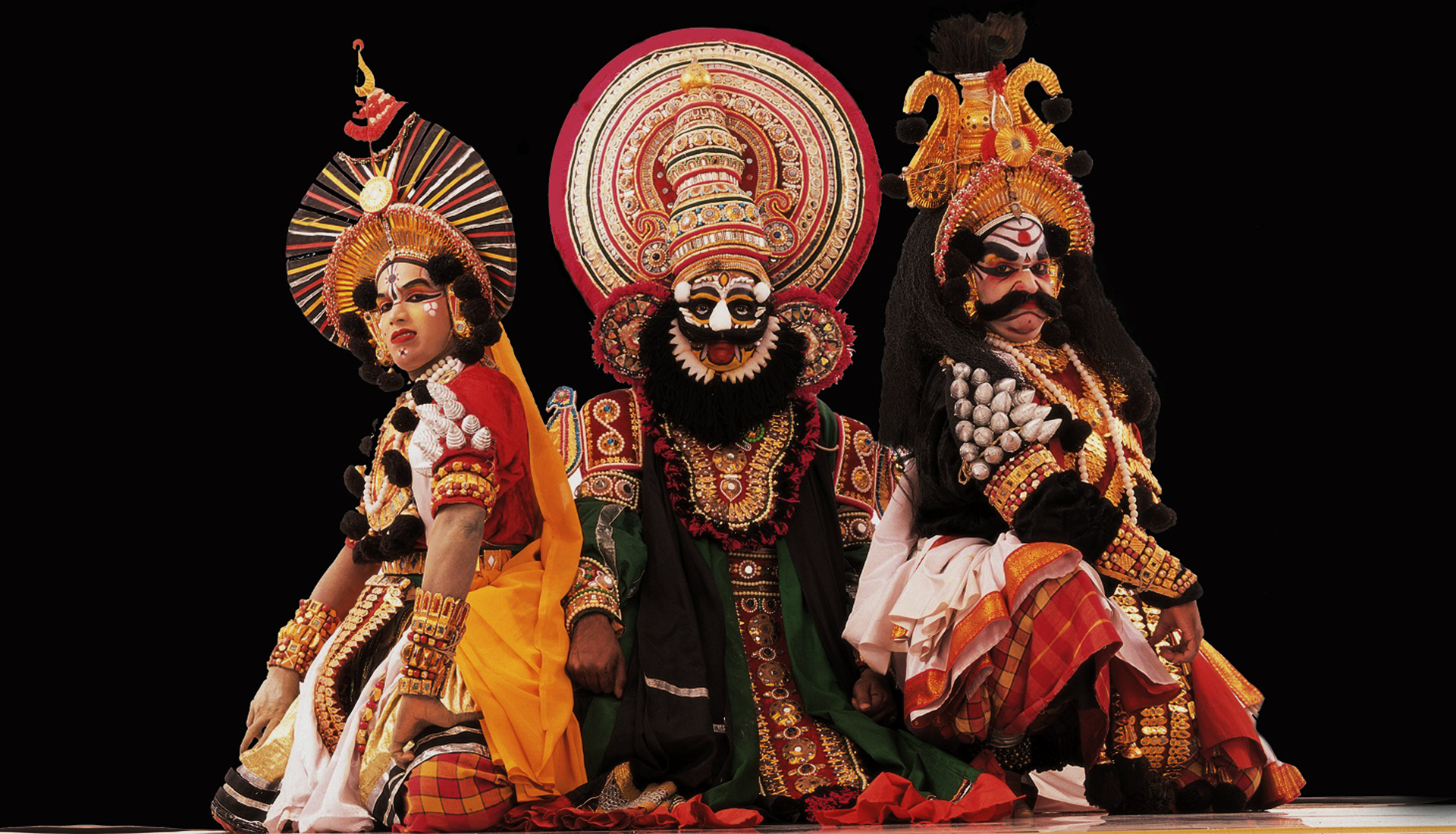
Yakshagana is the traditional theatre art form of Karnataka, particularly prevalent and developed in south and north Karnataka, Udupi, Shimoga and western parts of Chikmagalur district in Karnataka. A group of performing artists is known as a Mela or a Mandali. Through the medium of music, songs with lyrics, drama, dance and dialogue in Kannada, varied stories from Hindu mythology, scared texts like the Ramayana, Mahabharata and Bhagwatham, stories are enacted and recreated by performers to entertain and enlighten the audience, pertaining to the significance of the presentation, maintaining the cultural and social relevance of the play. It is amazing to note that with 12,000 performances around the year, Karnataka generates a turnover of 6 crores!
Evolution and significance
The earliest prasanga (play) dates back to the 15th century. Ever since, Yakshagana, also known as music of the Gandharvas, has gone through varied stages of development and change in order to suit the changing trends of society. Nevertheless the basic structure of the story-telling has not changed. Originally the performance used to last the whole night but due to time constraints, it has been reduced to two to three hours. There are about 30 professionals troupes in Karnataka and about 200 amateur groups that perform around the year, particularly from November to May. During festive occasions, a Yakshagana performance is a must. The performers are essentially males and female roles are also enacted by men.
Training and technique
Young boys are trained to sing, act, dance and emote according to the scene required. Sri Idagunji Mahaganpati Yakshagana Mandali, Keremane, was founded by veteran artiste Shivarama Hegde in 1934 and followed by his son Shambu Hegde, who established the Srimaya Yakshagana Kala Kendra. The legacy moves forward with his talented son Shivananda Hegde who has made some innovative changes in the style of presentation and is acclaimed as one of the leading Yakshagana artistes of Karnataka. Other prominent artistes include Chittami Ramach, Kalinga Navada and Manyappa Uppoor. The technique is quite simple but the performers are expected to be versatile, as they are supposed to sing, dance, act and deliver the dialogues properly and in a dramatic manner.
Music and make-up
The music is Carnatic with elements of folk and light music, which varies according to the character representation. Besides vocal music, the percussion instruments used are Maddale, Chande and Taala to maintain the rhythm of the music and dance.
The make-up is quite elaborate and it takes hours for the performer to be ready. The colourful make-up changes according to the character represented.
In Badaguittu Yakshagana, ornaments are made out of light wood, pieces of mirror and coloured stones for a shining effect. Lighter material like thermocol and wood are used, covered with golden foil. The headgear or Kirata or Pagadi varies according to the character; Kavacha is used to cover the chest, Buja Keerthi are the armlets and shoulder ornaments, and the upper part of the body is more decorated. The kachhe is in red, yellow or orange and bulky pads are used to give the stout effect. While Bannada Vesh is for monsters, the Stree Vesh is of sari and other decorative ornaments.
Yakshagana overseas
Yakshagana is quite popular overseas as Kannadigas are an enterprising and hardworking lot, and they take their art forms along wherever they go. Yakshamitra was the first full group to be established overseas in Toronto (Canada) in 2008. Yakshagana and Yaksha Loka groups were formed in different parts of the U.S. Some troupes use live himmela music unlike the recorded himmela background score.
Picture Credit : Google



